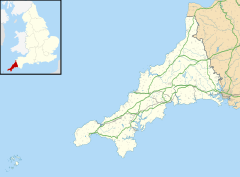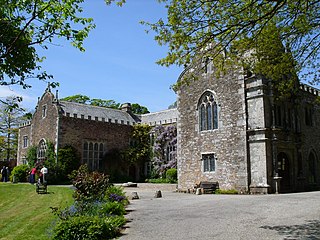
William Butterfield was a British Gothic Revival architect and associated with the Oxford Movement. He is noted for his use of polychromy.

Sir George Gilbert Scott, largely known as Sir Gilbert Scott, was a prolific English Gothic Revival architect, chiefly associated with the design, building and renovation of churches and cathedrals, although he started his career as a leading designer of workhouses. Over 800 buildings were designed or altered by him.
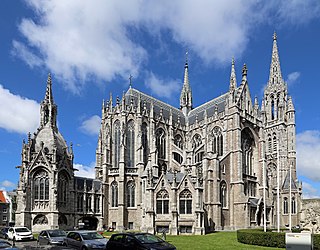
Gothic Revival is an architectural movement that after a gradual build-up beginning in the second half of the 17th century became a widespread movement in the first half of the 19th century, mostly in England. Increasingly serious and learned admirers sought to revive medieval Gothic architecture, intending to complement or even supersede the neoclassical styles prevalent at the time. Gothic Revival draws upon features of medieval examples, including decorative patterns, finials, lancet windows, and hood moulds. By the middle of the 19th century, Gothic Revival had become the preeminent architectural style in the Western world, only to begin to fall out of fashion in the 1880s and early 1890s.

St Columb Major is a town and civil parish in Cornwall, England, United Kingdom. Often referred to locally as St Columb, it is approximately seven miles (11 km) southwest of Wadebridge and six miles (10 km) east of Newquay The designation Major distinguishes it from the nearby settlement and parish of St Columb Minor on the coast. An electoral ward simply named St Columb exists with a population at the 2011 census of 5,050. The town is named after the 6th-century AD Saint Columba of Cornwall, also known as Columb.

St Columb Minor is a village on the north coast of Cornwall, England, United Kingdom.
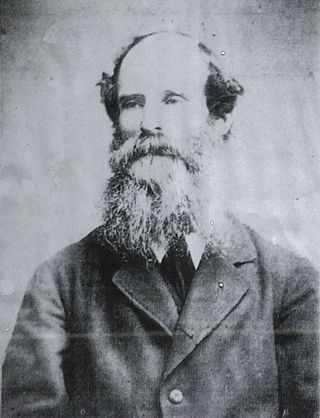
William White, FSA (1825–1900) was an English architect, noted for his part in 19th-century Gothic Revival architecture and church restorations.

St Mawgan or St Mawgan in Pydar is a village and civil parish in Cornwall, England, United Kingdom. The population of this parish at the 2011 census was 1,307. The village is situated four miles northeast of Newquay, and the parish also includes the hamlet of Mawgan Porth. The surviving manor house known as Lanherne House is an early 16th-century grade I listed building. The nearby Royal Air Force station, RAF St Mawgan, takes its name from the village and is next to Newquay Cornwall Airport. The River Menalhyl runs through St Mawgan village and the valley is known as The Vale of Lanherne. It was the subject of a poem by poet Henry Sewell Stokes.

Castle an Dinas is an Iron Age hillfort at the summit of Castle Downs near St Columb Major in Cornwall, UK and is considered one of the most important hillforts in the southwest of Britain. It dates from around the 3rd to 2nd century BCE and consists of three ditch and rampart concentric rings, 850 feet (260 m) above sea level. During the early 1960s it was excavated by a team led by Dr Bernard Wailes of the University of Pennsylvania during two seasons of excavation.
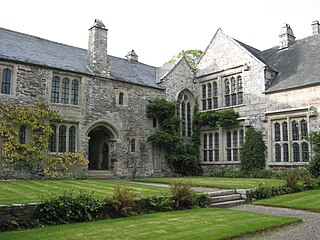
Cotehele is a medieval house with Tudor additions, situated in the parish of Calstock in the east of Cornwall, England, and now belonging to the National Trust. It is a rambling granite and slate-stone manor house on the banks of the River Tamar that has been little changed over five centuries. It was built by the Edgecumbe family in 1458 after the original Manor House was pulled down. Sir Richard Edgecumbe came into the property after fighting for Henry Tudor in the Battle of Bosworth. He was gifted with money and the original Manor House and estate and then proceeded to build Cotehele.

St Enoder is a civil parish and hamlet in Cornwall, England, United Kingdom. The hamlet is situated five miles (8 km) southeast of Newquay. There is an electoral ward bearing this name which includes St Columb Road. The population at the 2011 census was 4,563.

Ruan Lanihorne is a civil parish and village in south Cornwall, England, United Kingdom. The village is situated approximately four miles (6.5 km) east-southeast of Truro between the River Fal and its tributary the Ruan River.

Hinton Waldrist is a village and civil parish in the Vale of White Horse, England. It was part of Berkshire until the 1974 boundary changes transferred it to Oxfordshire. The village is between Oxford and Faringdon, 9 miles (14 km) southwest of Oxford. The parish includes the hamlet of Duxford. The 2011 Census recorded the parish's population as 328.

Caerhays Castle or Carhayes Castle is a semi-castellated country house built in 1808, 0.5 mi (0.80 km) south of the village centre, St Michael Caerhays, Cornwall, England. It overlooks Porthluney Cove on the English Channel. The garden has a large collection of magnolias.

Penrose is a house and National Trust estate amounting to 1536 acres, east of Porthleven and in the civil parish of Sithney, Cornwall, England. The estate includes Loe Pool and Loe Bar which was given into the ownership of the National Trust in 1974 by Lt. Cdr. J. P. Rogers, and stretches along the coast to Gunwalloe. The estate was owned by the Penrose family for several hundred years before 1771 when it was bought for £11,000 by the Rogers family, whose descendants still reside in Penrose House.
Treverbyn Vean is a 19th-century mansion in St Neot, Cornwall. Its exterior was designed by George Gilbert Scott and its interior by William Burges, two of the major architects of the Gothic Revival. The house is a Grade II* listed building. It remains a private home, although various outbuildings may be rented.
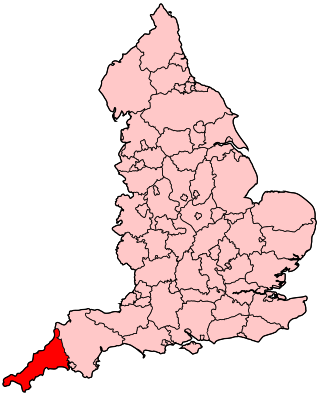
The following outline is provided as an overview of and topical guide to Cornwall: Cornwall – ceremonial county and unitary authority area of England within the United Kingdom. Cornwall is a peninsula bordered to the north and west by the Celtic Sea, to the south by the English Channel, and to the east by the county of Devon, over the River Tamar. Cornwall is also a royal duchy of the United Kingdom. It has an estimated population of half a million and it has its own distinctive history and culture.

St Julitta's Church, St Juliot is a Grade II* listed parish church in the Church of England Diocese of Truro in St Juliot, Cornwall.
The following is a timeline of the history of St Columb Major, Cornwall, England, United Kingdom.
Presented below is an alphabetical index of articles related to Cornwall:
